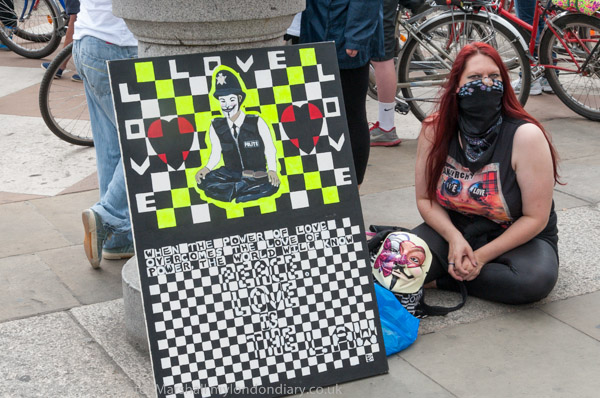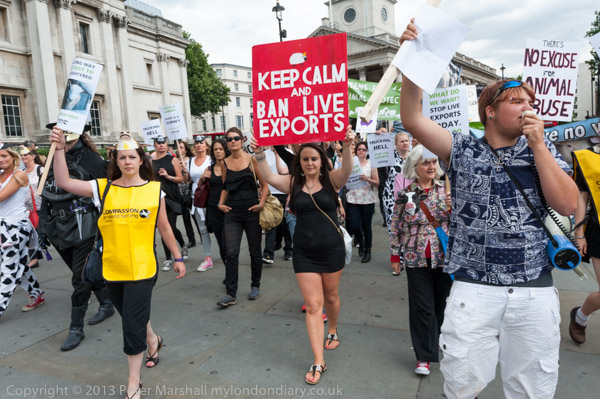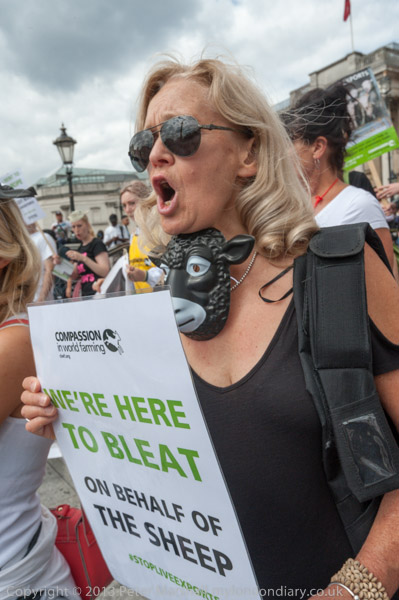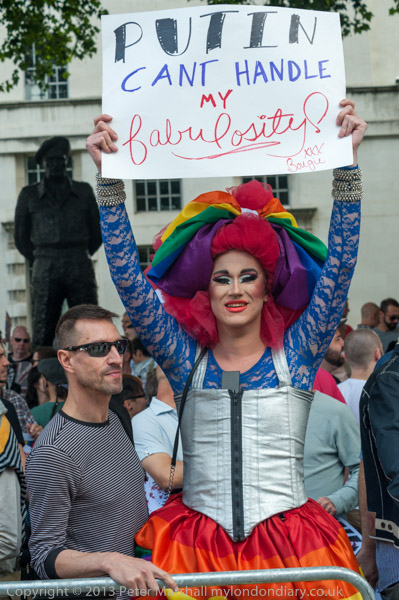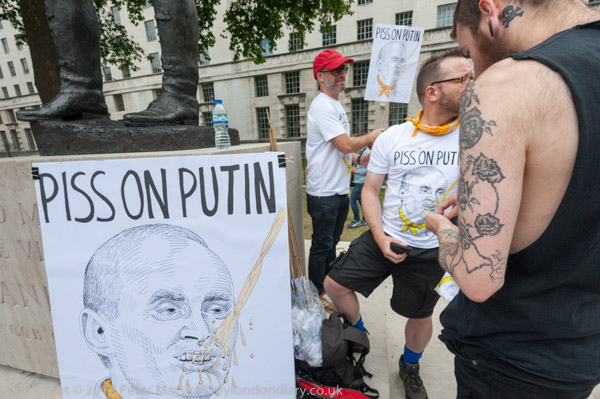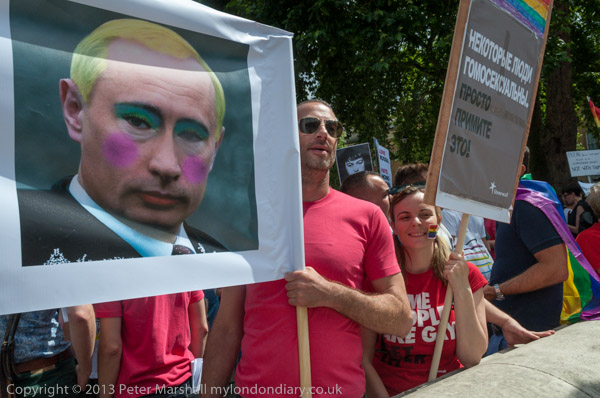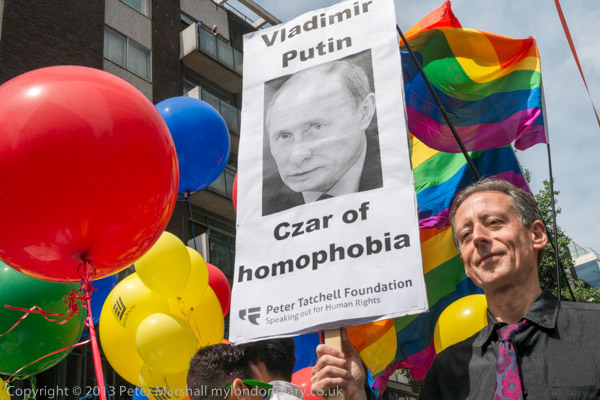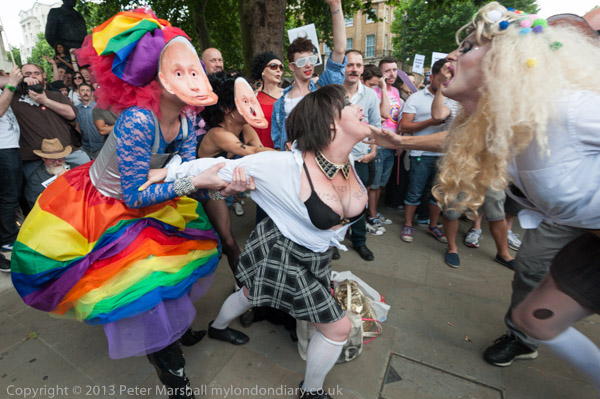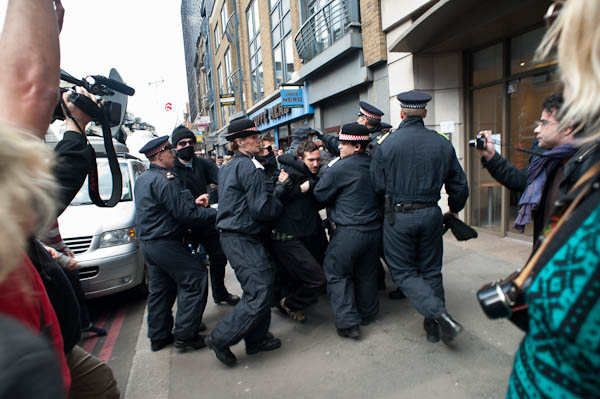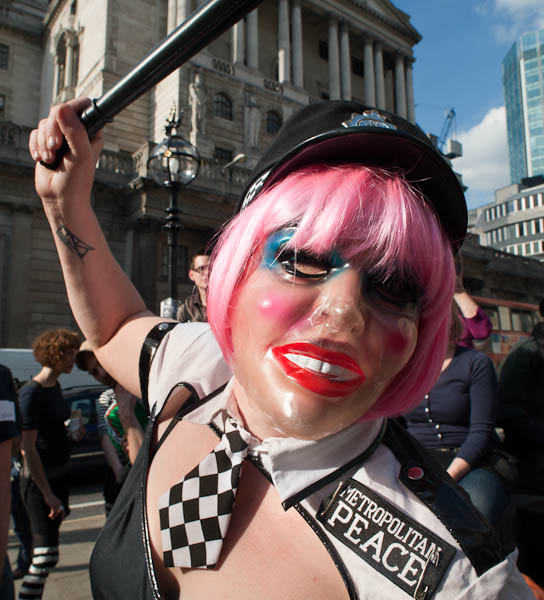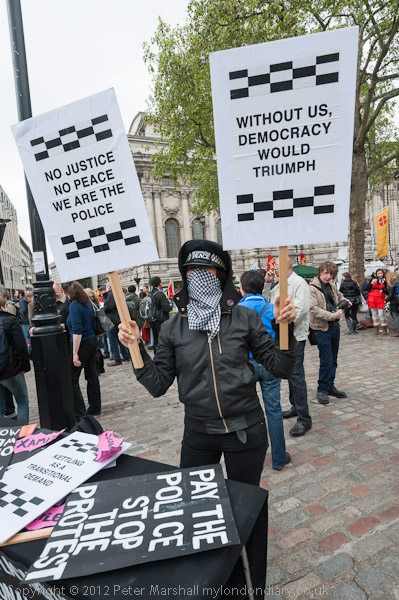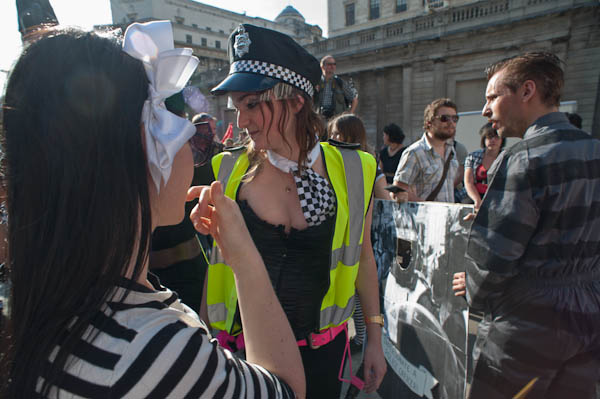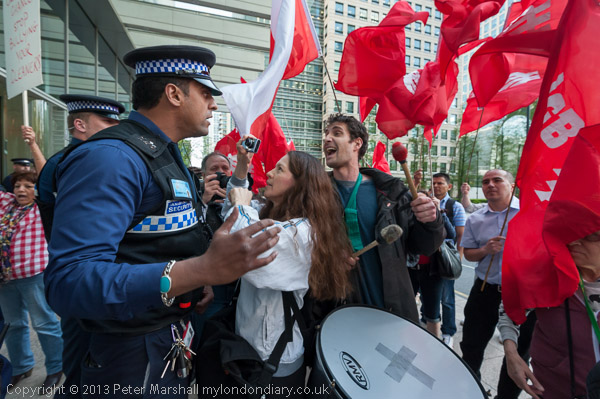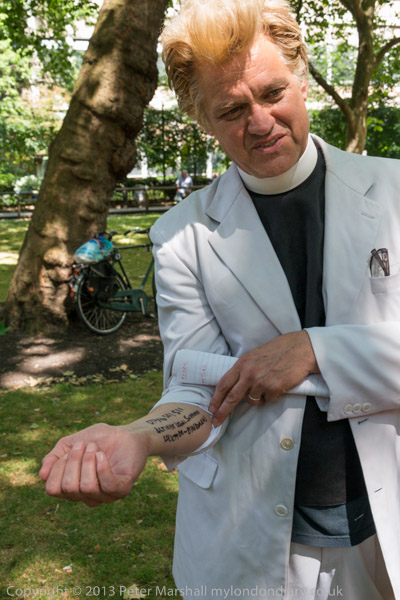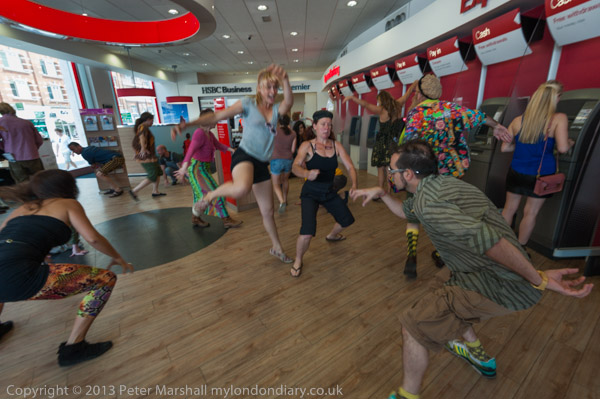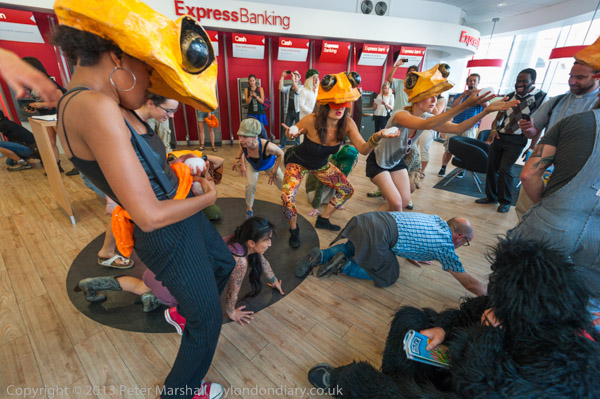I know Scotland isn’t London, but I’ve got into the habit of including my occasional absences from the capital on My London Diary, and so there are pictures from my week in Edinburgh now there on the web. It was only my second visit to the Scottish capital, and although I’ve enjoyed both of my times there, given the choice I prefer Glasgow, despite the language problems. It seems a rather warmer place. But Edinburgh certainly has its delights.
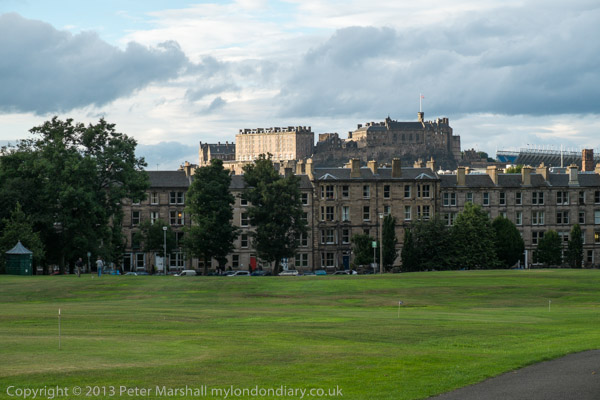
A view of the castle across the free links on the route from our flat to the city centre
Our first visit for a week’s holiday ten years ago was in the week before the Edinburgh festival, and if you want to see Edinburgh it’s a good idea to avoid the festival. But this year we had been invited to share a large flat close to the city centre during its busiest week to go to the festival, though we did also manage to do a few other things. And it was mostly those other things that I photographed – along with some of the festival stuff that happens along the High St, mainly groups trying to get an audience for their many shows by looking silly and handing out postcards with the details.
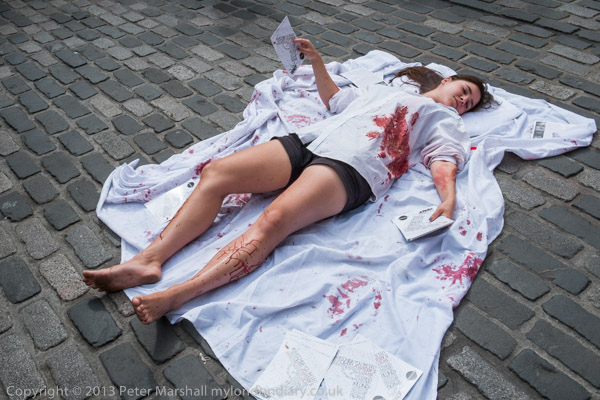
We were very selective in what we went to. With over a thousand events on most days you have to be, and we didn’t have the stamina of true festival-goers who can cram in a dozen different performances in a day, starting around 10am and finishing in the early hours. Its easy to spend a small fortune too, with the average ticket costing around a tenner, though some of the best things we went to were part of the Free Fringe, where you contribute what you like when you’ve actually seen the show, and may be offered a CD or book for relatively small donation. And perhaps the most satisfying event I went to (twice) during the week was entirely free, although I did buy the small catalogue of the Nam June Paik exhibition that I’ve already written about here. I’d taken my notebook computer with me to Edinburgh, hoping to blog ‘live’ from there, but there just wasn’t time, and I was too tired by the time we gave up for the day to do so.
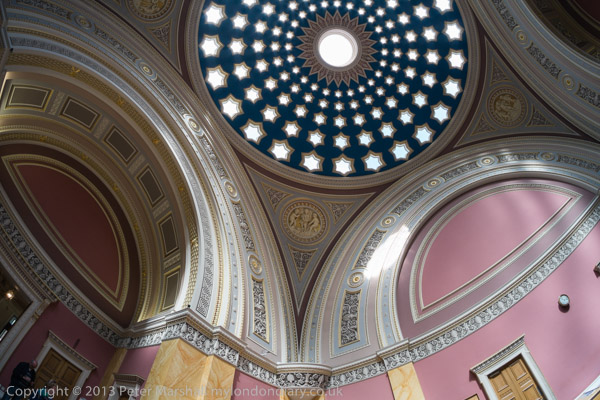
The splendid ceiling of a bank in the New Town – taken on a walk that was a Festival event.
We did go to several events after meeting people on the streets and taking their postcards, and it’s perhaps a better way to find things on the Fringe than the vast programme – available free in print or as a download or searchable on the web site, though there is a useful daily breakdown in The Scotsman.
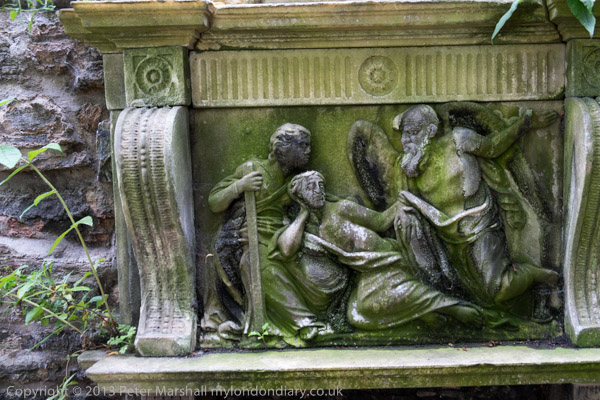
Probably the best thing about Edinburgh are its cemeteries, and I’d highly recommend the City of the Dead tours, listed as festival events but also running outside of it (beware pale imitations – we heard a little of one and it sounded appalling tourist nonsense.) We only went on it by accident, buying the tickets from others in the flat who had booked them and were called away to a funeral, but you need to go back in daylight too. They do have a certain photographic connection, as they made useful open-air studios for Edinburgh’s most famed photographers, Hill and Adamson back in the days of Calotype.
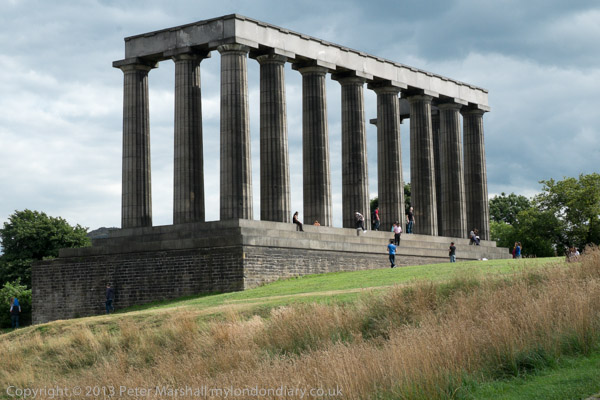
On the to of Calton Hill
Their studio was on the lower slopes of Calton Hill, Edinburgh’s free version of the London Eye, with splendid views across the city. Feeling energetic we also trekked up Arthur’s Seat, though this time we took the easy path – on our first visit I’d got fed up and decided on a more direct route – as I put it in a feature at the time: ‘I led our team up the north face of Arthur’s Seat, the extinct volcano overlooking the city.’ It turned out to be a little challenging, and could have become our final visit.
In 2003 I’d taken the D100, along with what was then the only Nikon lens I owned, a 24-85mm (36-127mm equiv.) One other limiting factor was that I only two 1 GB and a 512 Mb compact flash card, letting me take a maximum of around 250 raw images in a day, and had then to copy them over into a rather temperamental ‘Image Tank’ portable drive. The 24-85mm was a nice lens (and I’ve been sorry at times that I gave it away) but didn’t allow me to take any real wide-angle images, and looking at the pictures the difference between then and this year is obvious.
This August I had with me the Fuji X-E1 with the 18-55mm (27-82mm equiv) giving me a wider angle, but not going to a real telephoto. And if that 27mm equiv wasn’t wide enough, I also had a Voigtlander 15mm (22mm equiv) and wider still the Samyang 8mm fisheye.
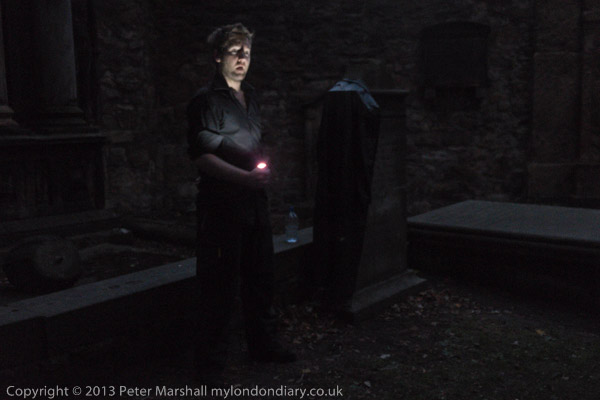
City of the Dead Tour in Greyfriars Kirkyard
So there is a different look to my pictures, with the earlier set concentrating more on details, but also being rather less sharp and less detailed. The Nikon lens wasn’t bad, but the 6Mp sensor doesn’t quite compete. Fuji is one of the best lens makers around, and the 18-55mm is fine, but its zoom range is a little limited. It was good to have a small light camera, and there isn’t perhaps a lot to choose between its digital viewfinder and the poky optical one in the D100, but recent FX format Nikons have far better viewfinders, and the cameras are so much more responsive than the Fuji. Usually it was fine for a holiday camera, but there were times, particularly in the cemetery at dead of night – when I wished I was holding my D800E.
The pictures from 2003 are no longer on line, but you can see a good selection from this year at Edinburgh & the Festival
Continue reading Edinburgh & the Festival






